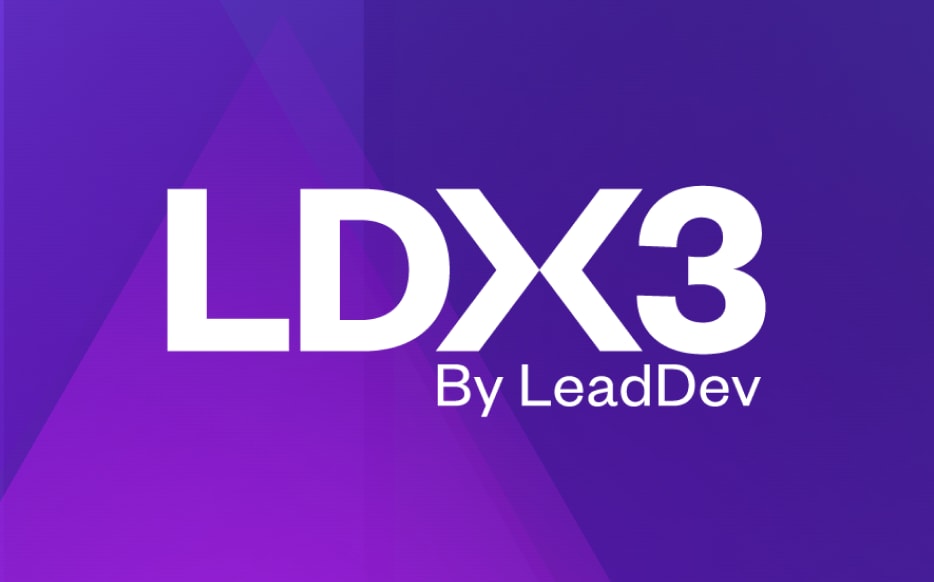You have 1 article left to read this month before you need to register a free LeadDev.com account.
Estimated reading time: 6 minutes
VP of engineering JB Brown explains how multi-agent AI is helping Smartsheet engineers deliver faster outcomes.
AI is no longer just “fun to have” in software development – it’s becoming necessary to retain a competitive edge.
One organization going “all in” is project management and collaboration software-as-a-service (SaaS) provider Smartsheet. For them, encouraging AI within the development process has been key to attaining business leverage, says JB Brown, Smartsheet’s VP of engineering and an advisor for Roo Code.
Part and parcel to their strategy has been the use of multiple specialized agents simultaneously for areas like planning, scaffolding, coding, bug testing, diagnosis, or other software development life cycle (SDLC) activities. “You basically have a whole engineering team at your fingertips,” says Brown.
While other CEOs bark AI mandates from on high, Smartsheet has not officially directed the use of specific AI tooling. “I don’t want to create a false sense of rigidity by being tied to a specific tool,” says Brown. This flexibility is paying off, enabling engineers to bring the right agentic tool for the job at hand.
As far as adoption goes, Smartsheet engineers are well into their journeys. “Every engineer is using AI tools nearly every day inside the organization,” he says. About two-thirds regularly use GitHub Copilot and Roo Code, an agentic software development platform. In doing so, Brown shares that Smartsheet engineers have cut down workloads, improved performance, and reduced expenses in certain situations.
Freeing up time
The primary goal with any AI strategy in a business setting should be to enhance job satisfaction. This is achieved by outsourcing tedious, mundane tasks to AI, so users can devote more time to more creative and mentally stimulating activities, says Brown.
Smartsheet follows this guiding light for its products and as an approach to its internal engineering workforce. “It’s not AI features for the sake of technology. There are customer pain points, and we look for the best solutions to solve them.” Often, agentic AI just happens to provide the best solution. “The same is true for engineers in being more efficient.”
For example, Smartsheet shares that an engineer used Roo Code to generate a script that combs through Smartsheet’s community website to help classify customer feedback. Although it’s still in progress, it has already reduced this once tedious workload from several hours to less than thirty minutes.
Your inbox, upgraded.
Receive weekly engineering insights to level up your leadership approach.
Improving performance
Code understandability is another big area Smartsheet is optimizing using multiple AI agents. Smartsheet has nearly 500 independent contributors, and developers often need to read and understand code written by other contributors or revisit code they wrote months earlier. It’s a common dilemma that creates productivity drag in large organizations, where code context can be lost over time.
“Big chunks of time are spent reading code, more so than writing code,” says Brown. To solve this problem, engineers are using Roo Code to spit out sequence diagrams and a history of changes, giving them instant refreshers. They’re also using GitHub Copilot to navigate through the stack to understand the meaning behind code.
Small tasks that engineers do all the time – like outputting a log to the console, then editing or adjusting it so it makes sense – are really laborious when done manually. “If you’re continuing to try and do it that way, you’re probably slower and less accurate than if you were to just ask a generative AI agent to explain it to you,” says Brown.
Smartsheet looks to agentic AI to optimize these repetitive loops. “That saves time, and it also saves a lot of frustration from engineers,” says Brown. For instance, Smartsheet shared that an engineer improved verification pipeline performance by 80% using AI tooling.
Performance gains from multi-agent orchestration are also having an effect of reducing costs. For example, Smartsheet reports that a team of their engineers used multiple agents when implementing code that they previously would have had to buy a new tool for or spend on a sprint for an engineer to build. Doing so, they were able to implement said new code in only thirty minutes, saving more than $13,000.
Executing strategy with AI agents
To continue to deliver business value with an agentic-based software development strategy, Brown shared a handful of useful advice to consider.
More like this
Engineering managers set the tone
For one, it’s not just individual contributors – engineering leaders must ensure teams optimize their use of AI to continually deliver strategic value. As Brown shares, the onus is on leaders to keep tabs on their workforce’s use of AI agents and ask challenging cultural questions:
“It seems clear AI will make them more productive at some point. Now, the common questions I hear now are: ‘Is my team going to make the most of that?’ ‘Will they be mentally ready?’ ‘Will they see that movement and use that as leverage for customers and business?'”
By asking these challenging questions, engineering leaders aren’t just checking in on team morale. They’re preparing their teams to realize the gains that AI will bring across the organization. This could equate to unearthing innovative use cases, spotlighting side projects using AI, or finding helpful tactics to optimize their use company-wide. In business terms, this translates into better productivity for the organization.
Practice what you preach
Engineering managers should also be using AI tools to make improvements themselves. Brown encourages them to have humility, practice what they preach, and learn firsthand how these tools behave. “‘Do what I say, not what I do’ doesn’t work very well,” he says. “If we’re there and putting our time in and our learning and dealing with them, then everybody is moving together.”
Seeing how the technology works firsthand helps leaders gain credibility and perspective into what contributors are utilizing on the ground. Not only could it help leaders with their own tasks, but it could also help them make sharper calls about where AI could be employed for strategic leverage, helping move the dial on efficiency, developer satisfaction, and cost savings, without locking the organization into rigid tooling choices.

London • June 2 & 3, 2026
Rands, Nicole Forsgren & Matej Pfajfar confirmed
Senior knowledge sharing = clutch
However, realizing net gains with AI agents has one major roadblock: not everyone is proficient at prompting AI. “Initially, the media impression was that AI would advance early-stage developers to be more competent,” says Brown. “What we’re finding is that this was maybe a false promise, because they don’t know how to ask the right questions.”
Whereas junior developers may not know the constraints of their wording, senior engineers pull on their vast experience to develop their prompts, leading to better outcomes. “They have enough experience in making mistakes themselves and how to talk about the solution and obstructions to a model to be able to get really good results.”
Without strong prompting skills, teams risk wasting time debugging or losing sight of the overall architecture. Therefore, an internal AI strategy will hinge on encouraging knowledge sharing from senior engineers to improve the aptitude of how to best use AI agents, resulting in faster workflows and better overall efficiency.
As Brown describes: “It’s changing the dynamics of engineering responsibilities, because now, we’re giving directions to those senior engineers that they need to help junior engineers.”





